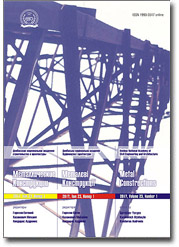Orthotropic decks — past developments and future outlook
Abstract: Steel orthotropic decks, first introduced in the 1950s in Germany, are now used in bridges world wide. Their light weight and structural efficiency made possible long span bridges with span lengths that were previously considered unthinkable. Problems of fatigue and safety against cracking are discussed. Cracking at orthotropic deck welds are caused mainly by fabrication effects (defective welds, residual stresses), with effects of fluctuating stresses being of secondary importance. Therefore, classical elastic fatigue theory based on stress range of applied loading is not applicable to assess safety against cracking. Based on experiences with orthotropic deck bridges, an empirical approach is required and has been introduced in the Eurocode and other design specifications for steel bridges. The cost of orthotropic decks may be reduced and their structural efficiency enhanced by the use of longer rib spans and simplification of details. Standardization and serial production of prefabricated deck panels would help to further increase the acceptance and utilization of orthotropic decks.
Keywords: orthotropic decks, steel bridges, fatigue, cracking, prefabrication, design specifications.
Pages: 209-220.
For citation:
For citation: Wolchuk, R. Orthotropic decks — past developments and future outlook. – Text : electronic. – In: <em>Metal Constructions</em>. – 2009. – Vol. 15, N 3. – Р. 209-220. – URL: https://donnasa.ru/publish_house/journals/mk/2009-3/05_volchuk.pdf (date of access: 07.01.2026). – ISSN 1993-3517.

Vol. 15, N 3 (2009)
Journal: Metal Constructions
Publish house: Donbas National Academy of Civil Engineering and Architecture
Journal: Metal Constructions
Publish house: Donbas National Academy of Civil Engineering and Architecture
